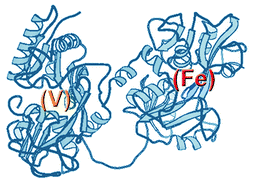Complementary FPLC-ICP-MS and MALDI-TOF for studying vanadium association to human serum proteins
Abstract
The on-line coupling of fast protein liquid chromatography (FPLC) with an inductively coupled mass spectrometer (ICP-MS), with and without collision cell system, has been evaluated for studying vanadium association to human serum proteins. The separation of human serum proteins was achieved on a MonoQ (HR5/5) anion-exchange column using an ammonium acetate gradient (0–0.5 mol l−1) in the mobile phase. Proteins, initially incubated with V(III) or alternatively V(IV), were detected spectrophotometrically at 295 nm and the V detection was carried out on-line with a quadrupole ICP-MS (ICP-Q-MS) or an octopole ICP-MS collision/reaction cell (ICP-ORS-MS) system. In such an arrangement, both instruments proved to be adequate for V detection at basal levels in human serum. The results obtained with the procedure developed confirmed that V(IV) as well as V(III) seem to be eventually associated preferentially to transferrin protein in normal human serum. The observed vanadium distribution profile is similar to that previously reported for Fe(III) and Al(III) associations to human serum transferrin. Intact protein analysis by MALDI-TOF has confirmed the molecular structure of transferrin as the protein associated to the V fraction.


 Please wait while we load your content...
Please wait while we load your content...